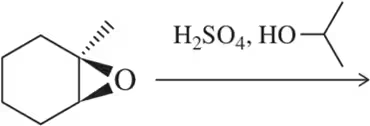What is the major product obtained from the reaction of 2-ethyloxirane with each of the following reagents?
d. CH3OH/CH3O-

 Verified step by step guidance
Verified step by step guidance Verified video answer for a similar problem:
Verified video answer for a similar problem:



 4:34m
4:34mMaster Acid-Catalyzed Epoxide Ring-Opening with a bite sized video explanation from Johnny
Start learning